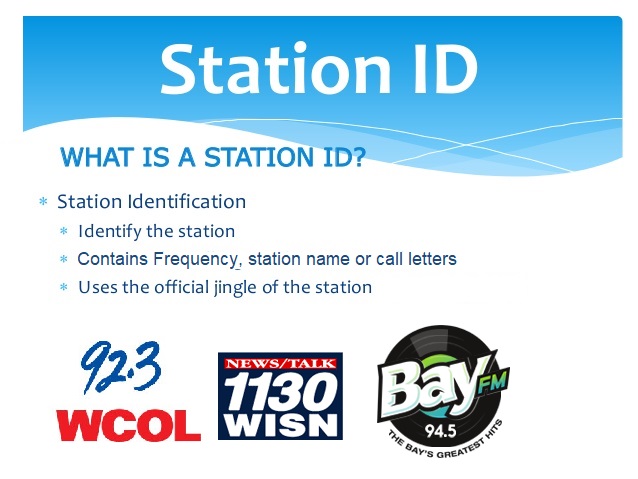By Jon Holiday ~ Managing Partner Radio Consulting Services

If you’re competing in a rated market you are probably dependent on either Eastlan or Nielsen Ratings as a research tool for sales and to measure your stations programming performance. Or if you utilize barter as a means of paying for products and services with networks and syndicators it’s important for your stations to get as much listening credit as possible. You probably also know that both ratings services methodologies are based on listener recall.
In our opinion it’s vitally important to always identify your station as often as possible, even after every song. There are several reasons for this, including, but not limited to: (1) You don’t know when your listeners tuned in and you need to tell them which radio station they’re listening to; (2) You don’t know how many listeners heard your last ID; and (3) Persuasion works best with repetition of the message; repeating station IDs or call letters is the best way to persuade.
The need to hammer away on frequency/moniker or call letters is necessary to frequently tell listeners which radio station they are listening to. According to ratings data, most listeners identify radio stations by exact frequency, fewer listeners identify stations by a name or moniker i.e., KISS-FM. Even fewer by call letters unless they’re the primary identifier.
According to renowned radio researcher, Roger Wimmer “Many, many studies document that imaging statements, call letters, and the radio station’s frequency, are not perceived negatively by the listeners. They don’t mind being told that the radio station they’re listening to ‘Plays only the hits’ or whatever your statement is. An appropriate imaging statement or station identifier between every song is not too much.”
The majority of entries contain exact frequencies; whole number entries occur these days at a low incidence, because digital read out radios have been around over 30 plus years and most stations have been identifying more and more by using their EXACT frequencies. There are of course exceptions; Z-100, KS95, K-Earth 101, etc. who have had these names for decades.
The practice of rounding a radio frequency may not make sense for most stations any longer. Years ago, the late Bob Michaels former Arbitron and PPM VP/Programming Services was asked his opinion on this practice.
“Make believe you just moved to my town and I invited you to my house to visit. I gave you my “rounded” address as the 3700 block of Poplar Court. However, my actual address is 3710 Poplar Court. You may or may not find my house. My question for you is this: Why are you making it hard (in the age of digital readouts on radios) for your listeners to find your station?”
I agreed with Bob then and I agree with him now. In most cases rounded frequencies make no sense.
Your goal should be repetition of the message (frequency/moniker or call letters). If a station gives its ID 50 to 100 times and hour, the odds of persuasion (getting people to remember the call letters, etc.) are increased dramatically. We like to see stations utilize a combination of jock/jingles/imaging between songs.
About Radio Consulting Services
For nearly a decade, Radio Consulting Services has provided programming, music, marketing and promotional direction to stations all over the United Stations and Canada.
Radio Consulting Services is a multi-format consulting and programming services company advising stations in various formats on growing audience.
For more information on how Radio Consulting Services can help your company gain more listeners, achieve higher ratings and grow revenue, contact us.
